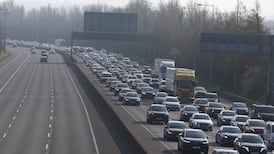The horrifying collapse of the Morandi bridge in Genoa, resulting in 39 deaths, has presented Italy's populist government with its first major test and raised important questions about infrastructural spending that governments across Europe must confront.
Disasters such as this are usually followed by a period of shock and mourning. In Italy in recent days, however, the public discussion was dominated immediately by anger and recrimination. Politicians rushed to apportion blame. Prime minister Giuseppe Conte promptly announced the government would tear up its agreement with Autostrade per l'Italia, which operated the bridge. "The guilty party of the tragedy in Genoa has a name and a surname, and it's Autostrade per l'Italia," deputy prime minister Luigi Di Maio said.
The cause of the disaster will not be known for some time. The bridge was old – it was built in 1967 – and traffic volumes had increased significantly in the intervening decades, but it will require a long and laborious investigation to establish whether it was a design flaw, inadequate maintenance, poor materials, earth movement or something else that was to blame.
Whatever the cause, the tragedy highlights acute problems facing the Italian state. The country’s motorways, bridges, viaducts and tunnels are run by a multitude of public, private, local, regional and national agencies – a fragmented system with little oversight. For years, Genoa has debated a much-needed expansion of its motorway network, which would ease pressure on the Morandi bridge, but construction has not yet begun. Spending on infrastructure renewal has been too low, but even when funding is available opposition can delay projects indefinitely.
One vocal such opponent is the Five Star Movement, the populist party that is now part of the ruling coalition, which argued that the motorway expansion was unnecessary and an opportunity for corruption. The League, Five Star’s coalition partner, has different spending priorities. But neither party had shown much interest in roads and rail infrastructure before last week.
The Genoa disaster should raise questions beyond Italy itself. In France, the transport ministry last month warned the country's road network was in a "critical state" after an official study found a third of its road bridges required repairs and 841 posed a potential risk. In Germany, a report last year found many of the country's bridges were not designed or today's heavy freight traffic and that 12 per cent were in bad condition. Similar warning bells have gone off elsewhere.
The investigation into the Morandi bridge collapse should reveal why it failed so catastrophically. In the meantime, governments across the continent cannot say they haven’t been warned about the dangers of failing to renew and maintain vital public infrastructure.












